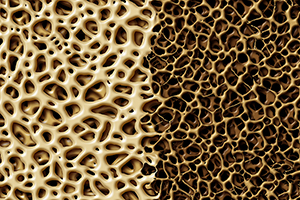



| By Dr. Ronald Hoffman
Several different viruses, the most common of which belong to the category rhinovirus, cause the common cold. Herbal, pharmaceutical and homeopathic remedies have consistently failed to treat symptoms or to significantly shorten their duration. In fact, certain studies underscore the questionable efficacy of some traditional cold remedies such as echinacea and goldenseal.
At the Hoffman Center, this simple 3-step plan has proven to be remarkably effective in our practice in terms of both reduction of symptoms and duration of illness.
It’s imperative that this regimen be started at the very first sign of a cold.
ZICAM nasal gel: 1 pump each nostril every 2 to 4 hours
Olive Leaf extract: 6 to 8 caps daily or 1 capsule every hour or two
Ester c: 550 mg. four times daily
The following is a study on Zicam entitled, “Zinc nasal gel for the treatment of common cold symptoms: A double-blind, placebo-controlled trial,” by Michael Hirt, MD, Sion Nobel, MD and Ernesto Barron, BS, published in ENT Journal, October 2000 Vol. 79 No. 10:
Effective treatments for the common cold have been difficult to develop because so many different types of virus are responsible for this condition. Oral zinc has been studied as a possible means of preventing or alleviating symptoms, with mixed results. We studied a new approach to zinc therapy—an over-the-counter nasal gel formulation (Zicam)—to independently evaluate its efficacy as a treatment for the common cold. Our study was conducted at four sites over a 5-month period. The study group consisted of 213 patients with recent-onset (24 hour) cold symptoms; 108 patients received zinc therapy and 105 received placebo. Symptom charts were used to track the duration and severity of each patient’s symptoms. At study’s end, the duration of symptoms was 2.3 days (0.9) in the zinc group and 9.0 days (2.5) in the control group, a statistically significant difference (p<0.05). These results provide evidence that zinc nasal gel is effective in shortening the duration of common cold symptoms when taken within 24 hours of their onset.
Introduction
The common cold is caused by a viral infection in the nose.1 Its symptoms, which vary in severity, include sneezing, rhinorrhea, nasal congestion, sore and/or scratchy throat, cough, hoarseness and mild general symptoms such as headache, fever and body aches.1,2 Of the more than 100 different cold viruses, the most important are rhinoviruses.3 The lack of effective treatments for the common cold is of concern because adults contract an average of approximately three colds each year and children experience twice as many.2 The number of workdays lost to cold-related illness is substantial.4
The use of zinc formulations for the treatment of common cold symptoms has been receiving increasing attention in the medical literature as well as in the lay press. Some studies in humans have shown that zinc lozenges were effective in shortening the duration of common cold symptoms in adults.5-7 There also have been some negative reports concerning the use of zinc lozenges, but these findings appear to be related to the use of formulations that did not allow the release of ionized zinc into the oral cavity.8,9 It has been shown that ionized zinc has direct anti-rhinoviral activity,10,11 protects cells from damage by viral toxins,12 and might inhibit the rhinovirus’ ability to attach to, enter, and infect human nasal cells.13
Recently, a new approach to zinc therapy—an over-the-counter nasal gel formulation (Zicam)—was the subject of a preliminary study (C.B. Hensley, Ph.D., and R. Davidson, Ph.D., unpublished data, 1999). That study demonstrated that the direct application of the nasal gel containing 33mmol/L of ionic zinc within 24 hours of the onset of common cold symptoms significantly shortened the duration of those symptoms. The researchers hypothesized that the delivery of ionic zinc directly to the site of infection should be more effective than oral delivery.
The goal of our study was to attempt to reproduce those results and independently assess the effect of zinc nasal gel on the duration of common cold symptoms.
Materials and methods
Our methodology was similar to that used by Mossad et al in their clinical evaluation of zinc lozenges in 1996.7 Subjects were recruited at four sites in the Los Angeles area. The study population consisted of 213 subjects; they were randomly assigned to receive either zinc nasal gel (n=108) or placebo (n=105). Only subjects whose cold symptoms had been manifest for 24 hours or less were enrolled in the study. Subjects were required to have had at least three of the following symptoms: cough, headache, hoarseness, muscle ache, nasal drainage, nasal congestion, scratchy throat, sore throat or sneezing. All participants provided informed consent upon enrollment. Exclusion criteria were pregnancy, an immunocompromised state, duration of common cold symptoms beyond 24 hours and the use of certain medications.
The zinc nasal gel consisted of zinc gluconate in an emulsion of benzalkonium chloride, glycerin, hydroxyethylcellulose, sodium chloride and sodium hydroxide; its pH level was 7.2. The composition of the placebo gel was identical except that it did not contain zinc.
Both gels were dispensed in a double-blind fashion in metered doses of 120ml in applicators supplied by Botanical Laboratories (Ferndale, Wash.). Subjects were instructed to spray one dose into each nostril every 4 hours (9 a.m., 1 p.m., 5 p.m. and 9 p.m.) for as long as they experienced symptoms. Participants were instructed not to take any other cold remedies or any drugs that might affect symptom scores.
Patients were provided with a diary to document the severity of their symptoms. Twice each day (at 9 a.m. and 9 p.m.), patients graded each of nine symptoms on a scale of 0 (absent) to 3 (severe). The total daily symptom scores were added together, and the mean and standard deviations were calculated for each patient.
The primary endpoint was the complete resolution of symptoms, which was determined when the total symptom score fell to zero. Subjects were asked to return to their study site within 24 hours of symptom resolution for verification and follow-up.
Results
The duration of each patient’s cold was defined as the number of days from study entry to the complete resolution of symptoms. The zinc nasal gel had a significant effect in shortening their duration (figure 1). The mean resolution time was 2.3 days (0.9) for the zinc patients and 9.0 days (2.5) for the controls (figure 2). The difference was statistically significant (p<0.05).
Subjects also had been provided a list of five potential side effects (nausea, bad taste reactions, odor, dizziness and drowsiness) and asked during the study and again at the end of the study whether they had experienced these or any others. While none of the subjects reported any of these five side effects, 45 zinc patients (42 percent) and 39 controls (37 percent) did report that they had experienced a slight tingling or burning sensation.
Discussion
The 75 percent difference in the duration of symptoms in our study is consistent with the 85 percent reduction reported by C.B. Hensley, Ph.D., and R. Davidson, Ph.D. (unpublished data, 1999). Although zinc nasal gel’s precise mechanism of action has yet to be elucidated, data suggest that ionic zinc have a direct effect on the ability of rhinovirus to infect and/or reinfect the nasal epithelium.10,11 Zinc ions form complexes with rhinovirus coat proteins. This interaction causes an irreversible alteration in the coat proteins and interferes with the assembly mechanism of the virus particles.11 In addition, Novick et al reported that ionized zinc can directly inhibit the rhinovirus’ ability to attach to, enter, and infect human nasal cells.13 The crystallographically modeled surface features of human rhinovirus-14 provide binding sites for approximately 360 zinc ions. The binding of ionic zinc is stabilized by histidine, methionine, tyrosine and carboxyl/carboxylate groups that line the rhinovirus-14 surface canyons. It has been proposed that this interaction block the rhinovirus’ ability to dock with intercellular adhesion molecule binding sites. In conclusion, our results support the findings of the previous study on the effectiveness of zinc nasal gel. Further research is needed to understand the interaction of ionic zinc and rhinoviruses, as well as the extent of susceptibility of other viruses to this treatment.
References
1. Gwaltne,y JM Jr. The common cold. In: Mandell GL, Bennett JE, Dolin R, eds. Mandell, Douglas and Bennett’s Principles and Practice of Infectious Diseases. 4th ed. New York: Churchill Livingstone, 1995:561-6.
2. Gwaltney JM Jr., Hendley JO, Simon G, Jordon WS Jr. Rhinovirus infections in an industrial population. I. The occurrence of illness. N Engl J Med 1966;275:1261-8
3. Gwaltney JM Jr., Ruckert RR. Rhinovirus. In: Richmann DD, Whitley RJ, Hayden FG, eds. Clinical Virology. New York: Churchill Livingstone, 1997:1025-47.
4. Couch RB. The common cold: Control? J Infect Dis 1984;150: 167-73
5. Eby GA, Davis DR, Halcomb WW. Reduction in duration of common colds by zinc gluconate lozenges in a double-blind study. Antimicrob Agents Chemother 1984;25:20-4.
6. Godfrey JC, Conant Sloane B, Smith DS, et al. Zinc gluconate and the common cold: A controlled clinical study. J Int Med Res 1992;20:234-46.
7. Mossad SB, Macknin ML, Medendorp SV, Mason P. Zinc gluconate lozenges for treating the common cold. A randomized, double-blind, placebo-controlled study. Ann Intern Med 1996;125:81-8.
8. Jackson JL, Lesho E, Peterson C. Zinc and the common cold: A meta-analysis revisited. J Nutr 2000;130(5S Suppl):1512S-5S.
9. Macknin ML, Piedmonte M, Calendine C, et al. Zinc gluconate lozenges for treating the common cold in children: A randomized controlled trial. JAMA 1998;279:1962-7
10. Korant BD, Kauer JC, Butterworth BE. Zinc ions inhibit replication of rhinoviruses. Nature 1974;248:588-90.
11. Korant BD, Butterworth BE. Inhibition by zinc of rhinovirus protein cleavage: Interaction of zinc with capsid polypeptides. J Virol 1976;18:298-306.
12. Kelly RW, Abel MH. Copper and zinc inhibit the metabolism of prostaglandin by the human uterus. Biol Reprod 1983;28:883-9.
13. Novick SG, Godfrey JC, Godfrey NJ, Wilder HR. How does zinc modify the common cold? Clinical observation and implications regarding mechanisms of action. Med Hypotheses 1996;46:295-302.
Olive leaf extract is a natural antibacterial, antiviral and antifungal extract derived from the Olea europaea tree. It’s also been tested and shown to be effective in vitro (no human studies are available as yet), against several viruses in addition to the rhinovirus. The more common of these include herpes and influenza A.
We frequently use olive leaf extract as a natural anti-fungal in the treatment of eczema, psoriasis, acne, sinusitis and chronic yeast vaginitis. It should be dosed differently for each indication. We recommend two caps three to four times daily for the duration of the cold symptoms. Although Zicam is discontinued after cold symptoms disappear, olive leaf extract and vitamin C three times daily should be continued for an additional day or two afterward. Most of our patients report vast improvement in all symptoms within two days of implementing the above regimen.
Though we think of declining estrogen as the hallmark of menopause, it's actually common for…

Up to 12 percent of Americans have ulcers at some point in life. Peptic ulcers…
Gallbladder disease is a modern illness. An estimated 20 million Americans have gallbladder disease. The…

Lately, I’ve been sharing with Intelligent Medicine listeners that I’ve been augmenting my diet with…

Q: I am a 77-year-old woman. On recent bone density test, lumbar spine results range…

The 1973 sci-fi movie Soylent Green depicts a dystopian future in which over-population and environmental…

Leyla Weighs In: Exploring Yoga’s Therapeutic Role in Neurological Disorders

Our virtual voicemail is open 24/7, so there's no need to wait to submit your questions for Dr. Hoffman. Leave a message, and you may hear your question featured on the Intelligent Medicine radio program!